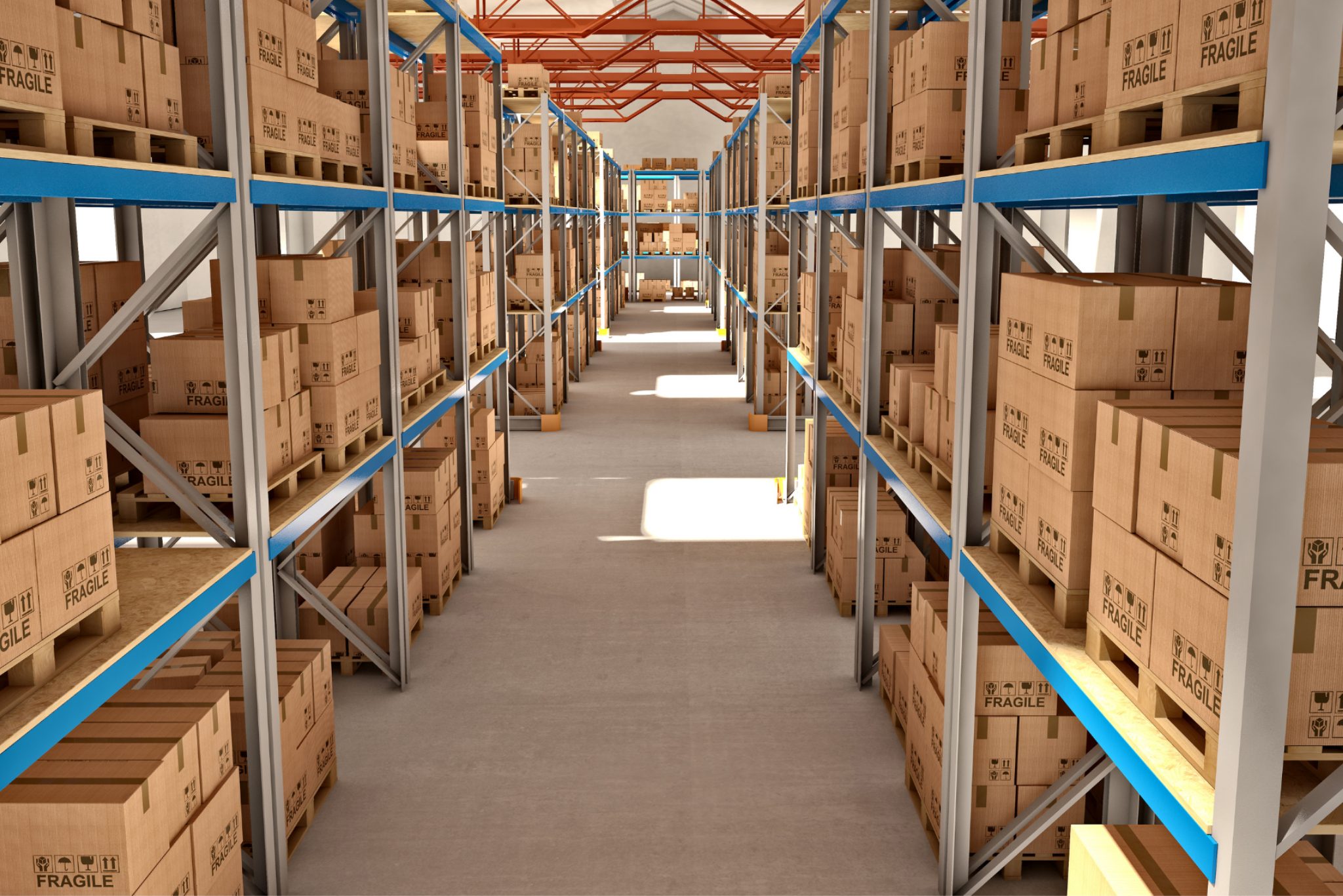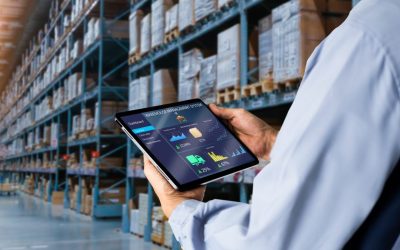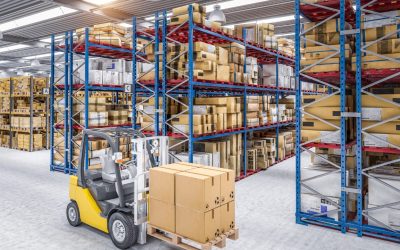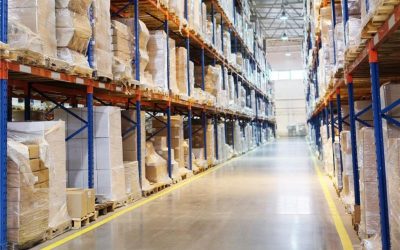Evaluating costs, control levels, and logistical requirements is key to selecting the warehousing model that best supports each company’s commercial strategy.
Selecting the right warehousing model can have a direct impact on a company’s profitability and growth potential. Inventory management impacts operational costs, delivery responsiveness, and the ability to adjust to market shifts. This choice becomes even more relevant in sectors such as technology, where inventory functions as a strategic asset that often requires immediate availability.
This article provides an in-depth examination of the primary warehousing models, detailing their advantages, limitations, and most suitable applications.
In-House Warehousing
Managing a proprietary warehouse means the company directly oversees its logistics infrastructure. This includes full responsibility for space management, staffing, inventory systems, and security measures. Such an approach offers complete control over all processes: the company determines how goods are organized, which technologies are implemented, what standards are applied, and which security protocols are followed.
However, this model requires a substantial upfront investment to build or adapt the facility, equip it, and maintain its operation. It also involves fixed costs that remain constant even during periods of lower demand, such as salaries, taxes, shelving maintenance, insurance, and utilities. Moreover, maintaining complete control requires a logistics-experienced team. For companies primarily focused on product development or sales, operating an in-house warehouse may divert critical resources away from core business priorities.
Third-Party Warehousing
Third-party logistics (3PL) refers to outsourcing warehouse operations to a specialized provider. Under this model, the partner manages storage, order fulfillment, and inventory management. 3PL solutions typically fall into two categories: public warehouses, where different companies share space, and contract warehouses, where a dedicated area is reserved for a single customer under long-term agreements.

This model’s primary advantage is its flexibility. Companies are charged only for the space and services they actually use. If demand spikes unexpectedly, capacity can be scaled up without the need for capital investment in proprietary infrastructure.
3PL providers also bring access to advanced technology. Many operate with warehouse management systems (WMS) that offer real-time inventory tracking, process automation, and error reduction. For instance, a hardware reseller serving customers across Latin America can outsource inventory storage to a logistics hub in Miami and dispatch orders to multiple countries, thereby avoiding the burden of high fixed costs.
Warehousing Models
Third-party warehousing offers specialized configurations tailored to different business needs.
Transit Warehouse or Cross-Docking
This model serves as a transfer point where goods are received, sorted, and quickly dispatched without extended storage periods. It is well-suited for high-turnover products or when time sensitivity is a key concern.
Advantages:
- Shortens dwell time and lowers storage costs
- Speeds up delivery
- Reduces the risk of inventory degradation
Fulfillment Center
Designed for companies operating in e-commerce, this model encompasses storage, order preparation, and direct distribution to the end customer. Fulfillment centers are typically integrated with platforms such as Shopify, Mercado Libre, or Amazon, allowing for fast return handling.
Advantages:
- Scalable capacity to manage demand peaks
- Full order traceability
- Improved customer experience through faster deliveries
Carolina Muller, VP of Business Development at Aerodoc, emphasizes that the company supports customers as they enter the US market. “This is something many of our customers overlook or never inquire about. We can step in from the moment they purchase a product abroad, managing transportation, import procedures, labeling, warehousing, or distribution to end customers and marketplaces. Aerodoc oversees the entire supply chain so that customers can stay focused on sales and business growth,” she explains.
Bonded Warehouses
Also referred to as customs warehouses, these facilities allow companies to store imported goods without releasing them for national use. This defers tax payments until the products are released for distribution or sale in the local market. For example, a satellite company importing high-value equipment can store cargo in a bonded warehouse in Miami and proceed with nationalization only once the project is confirmed.
Advantages:
- Goods are stored under official supervision, ensuring regulatory compliance
- Duties can be deferred until products are released for sale or export, improving cash flow
- Customs documentation and processes are centralized, expediting nationalization procedures

Cecilia Sandoval, US Operation & IT Solution Team Leader at Aerodoc, also emphasizes that “bonded warehouses offer flexible logistics by allowing inventory to be stored in strategic locations, streamlining distribution and supporting timely deliveries.”
Unbonded Warehouses
In this case, the goods have already been nationalized and can be distributed without customs restrictions. This model is ideal when inventory must be readily available for immediate sale or use.
Advantages:
- Faster operational turnaround
- Simplified administrative procedures
- Well-suited for products ready for market distribution
Guidelines for Selecting the Right Warehousing Model
Choosing the appropriate warehousing model involves assessing a range of factors that should be carefully reviewed:
- Product characteristics. Temperature-sensitive goods, fragile equipment, or hazardous materials require specialized facilities.
- Location. A warehouse close to the end customer helps reduce last-mile costs and improve delivery times. When shipments are consolidated at origin, international logistics can also be optimized.
- Value-added services. Capabilities such as picking, labeling, assembly, returns management, or marketplace integration may favor a specialized third-party logistics (3PL) provider.
- Financial capacity. A mid-term cost analysis helps determine whether it is more advantageous to invest in an in-house warehouse or pay monthly fees to an external provider.
- Preferred level of control. Companies managing complex or sensitive logistics processes may prioritize the autonomy provided by an in-house operation.
- Future flexibility. For seasonal businesses or those exploring new markets, a 3PL contract without long-term commitments offers a lower-risk way to adjust over time.
Many companies find value in a hybrid approach: maintaining an in-house warehouse for core inventory while partnering with a 3PL in key markets or to manage demand surges. This model offers a balanced mix of control, efficiency, and scalability to support sustained business growth.
“Many people believe 3PLs are all the same. That’s not true. We stand out because of our customizable solutions,” adds Muller.
To learn more about Aerodoc’s warehousing services, contact our team of specialists.
Q&A
- What key factors should be considered when calculating the total cost of ownership (TCO) for different warehousing models? Estimating the TCO of warehousing models requires evaluating fixed costs (infrastructure, staffing, insurance), variable expenses (storage by volume, value-added services), and hidden costs (inventory turnover, obsolescence, picking errors). A comprehensive assessment enables a precise comparison between in-house and third-party warehousing solutions.
- How can warehousing models impact customer experience in e-commerce operations? Selecting the right warehousing model enhances customer experience through faster deliveries, real-time inventory visibility, and efficient returns management. Fulfillment centers integrated with marketplaces optimize these processes, driving customer satisfaction and loyalty.
- What technological trends are transforming warehousing models in international logistics? Advanced warehouse management systems (WMS), warehouse robotics, and predictive analytics are reshaping warehousing models. These technologies improve inventory accuracy, reduce operational costs, and enable scalable, agile global logistics operations.
- What are the common risks when transitioning from an in-house warehouse to a third-party logistics (3PL) model? Key risks include loss of operational control, dependency on external SLAs, and potential technology integration issues. Mitigation strategies involve auditing 3PL providers, defining clear performance metrics, and implementing a phased transition plan.




